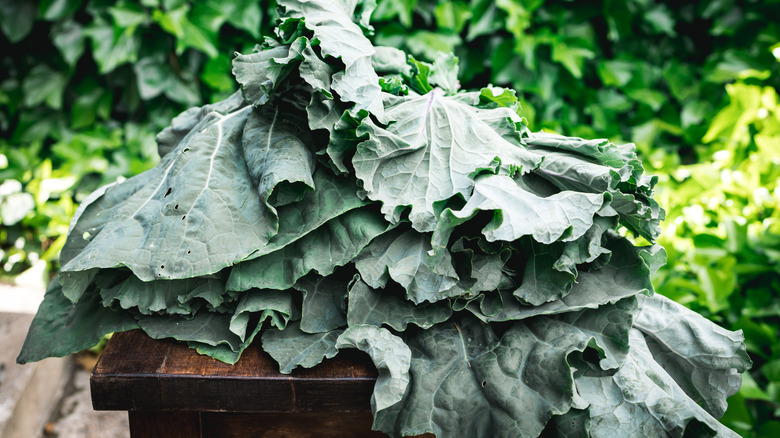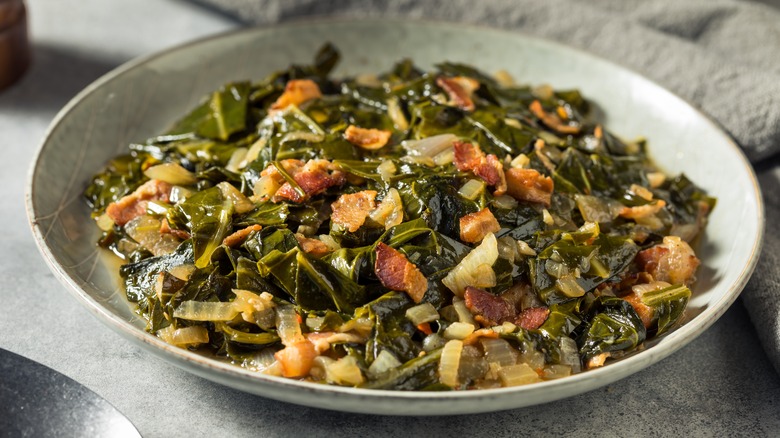How To Clean And Cut Collard Greens For Delicious Southern Cooking
Collard greens are a thick, leafy green vegetable that has become a staple of Southern cooking. People have been eating collard greens since prehistoric times, but it was enslaved people from Africa who solidified the greens' place in Southern cuisine. There are plenty of ways to cook collard greens to avoid their bitter taste, but a lot can be done before anything touches a stove. That's why we spoke with former chef and kitchenware brand founder at Fifth Fork, Kimberly Lock, to learn the best way to clean and prep these greens to transform them into the delicious home-cooked dish we all know and love.
One way to guarantee a tasty meal is to make sure you're cleaning your collard greens properly. The stems of these leaves are inedible and can be grown and harvested throughout the year. Lock's advice for cleaning starts with a big sink full of cold water. "I put my whole cut leaves, still attached to the stems, into the water and gently agitate with my hands," she states. Similar to how kale has a bitter taste that can be softened, "agitating" the collard greens helps remove some of the harshness inherent in the leafy goodness. But the dunk in water isn't just about affecting taste. It "prevents any bruising while rinsing away any dirt, dust, or potential [travelers] brought in from the garden," says Lock.
How to prepare collard greens Southern style
Unlike the British origins of Southern banana pudding, the roots of collard greens in America can be attributed to enslaved people. Since the time of African-American enslavement, collard greens have been simmered with a ham hock or salted pork to break down the tough fibers until they are soft and juicy.
Cutting these greens properly can lead to shorter cook times and more flavor. After the collard greens are clean, rinsed, and dried, it's time to prep them for cooking. "My go-to method for quick and easy prep is to fold the leaves together with the stem facing out," Kimberly Lock shares. She then separates the leaves away from the stems with a small paring knife before stacking the leaves. This step can't be skipped because the stems of collard greens are much more fibrous and bitter than the leaves and thus require more work to make them edible.
The final step to ensure the success of this dish is the knife work. Lock explains what she does to set herself up for success: "To chop for cooking, I'll take two to three of the stacked leaves, roll them lengthwise like a long cigar, then slice into ribbons," she says. And that's it — by following these careful cleaning and preparation steps, you'll transform tough, bitter collard greens into the tender, flavorful dish cherished in Southern cooking.


